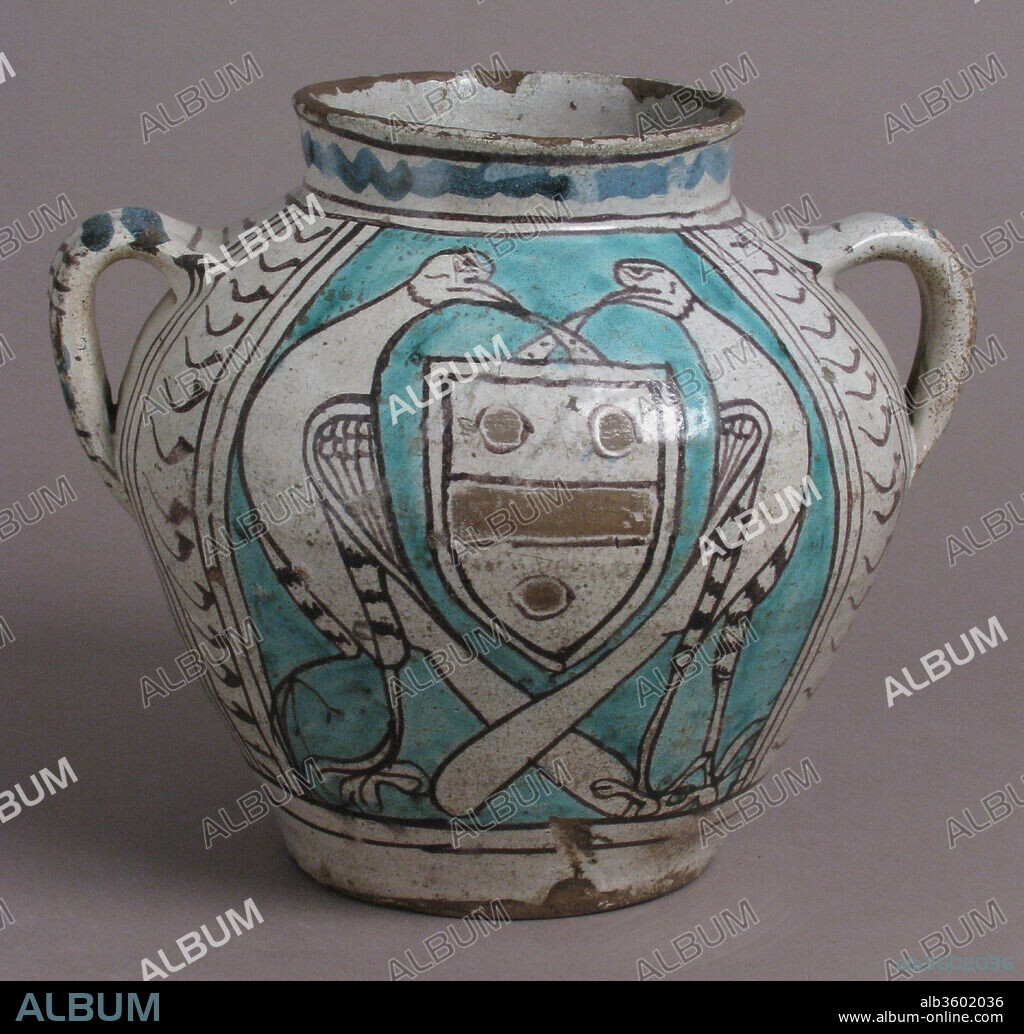alb3602036
Two-Handled Jar with Birds and a Coat of Arms

|
Ajouter à une autre Lightbox |
|
Ajouter à une autre Lightbox |



Avez-vous déjà un compte? S'identifier
Vous n'avez pas de compte ? S'inscrire
Acheter cette image

Titre:
Two-Handled Jar with Birds and a Coat of Arms
Légende:
Voir la traduction automatique
Two-Handled Jar with Birds and a Coat of Arms. Culture: Italian. Dimensions: Overall: 8 1/4 x 9 3/4 x 8 7/16 in. (21 x 24.8 x 21.5 cm). Date: early 1400s.
From 1400 on, finely turned and decorated glazed earthenwares have been associated with Florence. It is unlikely, however, that the earlier of these wares were actually made within the city walls, but rather in outlying Tuscan towns such as Montelupo, situated in the Arno valley between Florence and Pisa. Unlike the earlier Italian earthenwares, the so-called Florentine vessels initiated the use of an all-over white to gray tin-enamel glaze slip, against which the painted decoration was highlighted. For the first several decades of the fifteenth century, the palette was generally limited to tones of pale green, manganese purple (used primarily as an outline color), and, less frequently, cobalt blue. This particular example bears a coat of arms that has tentatively been identified as that of the Guida family if Siena or the Della Marchina family of Faenza. As with Spanish lusterware, the limitations of the palette rendered precise tinctures impossible, consequently, the heraldic devices are not easily identified. The vessel, made for a private individual, was probably used as a household storage jar for dried herbs, medicinal compounds, or other such substances.
Technique/matériel:
tin-glazed earthenware
Musée:
Metropolitan Museum of Art, New York, USA
Crédit:
Album / Metropolitan Museum of Art, NY
Autorisations:
Modèle: Non - Propriété: Non
Questions sur les droits?
Questions sur les droits?
Taille de l'image:
2822 x 2704 px | 21.8 MB
Taille d'impression:
23.9 x 22.9 cm | 9.4 x 9.0 in (300 dpi)
 Pinterest
Pinterest Twitter
Twitter Facebook
Facebook Copier le lien
Copier le lien Email
Email
